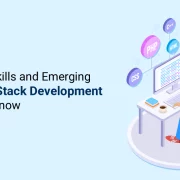
What are the Training Strategies for Effective Change Management?
What is a Training Strategy?
A training strategy is a systematic plan outlining the methods, resources, and objectives used to enhance the skills and knowledge of individuals within an organization, aligning with overall business goals.
Remember the time before 2020, when working from an office was the norm? Then the world changed, and remote work became the “new normal.” Business processes and training strategies also changed as technology became the cornerstone of every decision.
Adopting new technology and better applications helped businesses grow faster. However, each change needs a framework and process for a smooth transition.
This is where training for change management comes into play. There are various employee training challenges that can be handled with effective change management. Radical change without any support can affect employee performance and company outcomes.
Importance of Change Management
- Training to embrace new applications and
- systems is one of the most common scenarios for any business. As technology changes each day, vendors and business users must also keep themselves updated on the process.
- Training for change management helps place the entire staff on the same page and works as a refresher of skill sets.
- Another reason for this process is advancing past the rest: when more businesses start to train their staff for change, a company that does not will continue to lag.
Eight Effective Training Strategies for Change Management
Here are a few parameters to keep in mind when setting up a training program.
1. Understand the Resistance from Employees
At first, the process of training for change management can be highly overwhelming to the workforce. Most establishments face minor resistance in the form of disinterest and low attendance. The only way to ensure your employees are on board is by providing open communication channels.
Have discussions and meetings to explain the reason for the change. Elaborate on the positives and the circumstances by which this practice is implemented. The manager or head of departments must remain available for one-on-one clarifications and meetings to further understand and resolve the grievances of the staff.
Fighting resistance with resistance is futile and leads to more workplace hostility and lower work efficiency.
2. Create Custom Training Content
Change Management Training Strategy is imperative to implement interactive eLearning solutions for employee training. . Each department and employee needs different material to work with, which helps the business in two ways.
Firstly, each department only trains on the processes needed without wasting time on redundant details. Secondly, it allows the company to save time by tailor-making the program to the workforce’s needs.
This also means the company must remain slightly flexible.
You might also like to read: Principles of Change Management
3. Provide Flexibility
When we say “flexibility,” it means the on all fronts – the content format, use of devices, and training timings.
All work cannot come to a grinding halt to enable training, and this also means the staff cannot be subjected to long hours of training in addition to their workload. Similarly, in-person training is not possible for all; thus, alternate arrangements will help effective change management training strategy.
4. Set Up a Doubt Redressal Mechanism
A doubt redressal mechanism is a system for the staff to put forth their questions and grievances. This setup provides a unified channel to help clear doubts harmoniously. The tracking and resolution of these issues is the job of one dedicated person on the team.
It also enables better implementation of changes with a single point of contact or channel. A dedicated leader can help keep the process streamlined and help propel change. This is especially true in the case of a new software rollout. One leader is typically better trained and equipped to deal with all issues without outsourcing for help on every instance.
5. Technology for Better Learning
As mentioned earlier, an in-person class alone will not speed up training for change management. The establishment must also look into other options that are device fluid. For example, not all levels of the workforce might have access to a laptop, which means they must also remain mobile-friendly.
Some organizations also use gamification or scenario-based learning to make this process fun and engaging. This helps learn processes faster and encourages more of the workforce to remain involved. A simulation or AI-driven training module can also be feasible for some.
WHITEPAPER:
AI-Powered Learning – Transforming Employee Training Across Industries
6. Track Content Consumption Metrics
All training and no feedback can lead to slow growth. For further efficiency from the program, the tracking of metrics is essential. This data helps the establishment understand what is working and determine any roadblocks.
Some of these metrics can be determined during the learning process, while others might need external forms and surveys. For example, if most of the staff spends more time on a single section of the course, that unit might be hard to understand or poorly constructed. Such simple factors can enable the company to alter its modules accordingly.
Such information collection is also helpful in making changes to the modules and ensuring only the requisite processes are incorporated. In summary, the need for feedback is pivotal.
7. Provide Self-Assessment and Instant Feedback
Profile fun and interactive assessments to gauge the effectiveness of the training for change management. It helps the administration and the employees determine if they are getting the most benefits from the process.
An anonymous feedback system employing forms and emails can also help track data about the classes. Anonymity will also encourage honest feedback, allowing the organization to grow faster.
8. Be Patient
Lastly, note that these processes take time. Running through many months of modules in a single week will not help anyone. Have shorter sessions that aim towards steadier growth. Allow the workforce to retain their training without downloading a bulk-load of content at a time.
Creating a roadmap of this journey right at the start might be helpful. Inform your staff about the extent of this program and hold regular meetings to ensure the relevant touch-points are achieved.
Conclusion
Strong leadership is imperative for the whole training process to run as smoothly as possible. The leader must inspire the team and showcase an open-minded and forthcoming perspective. They must also remain approachable and flexible, understand the grievances of their workforce, and find amicable resolutions to any roadblocks.

Performance, Results, Growth, and Life-Long Learning define my professional life. I am passionate about making workplace learning planful, purposeful, and impactful. I take pride in partnering with clients and bringing them the best in learning design and creating solutions that address business challenges.





